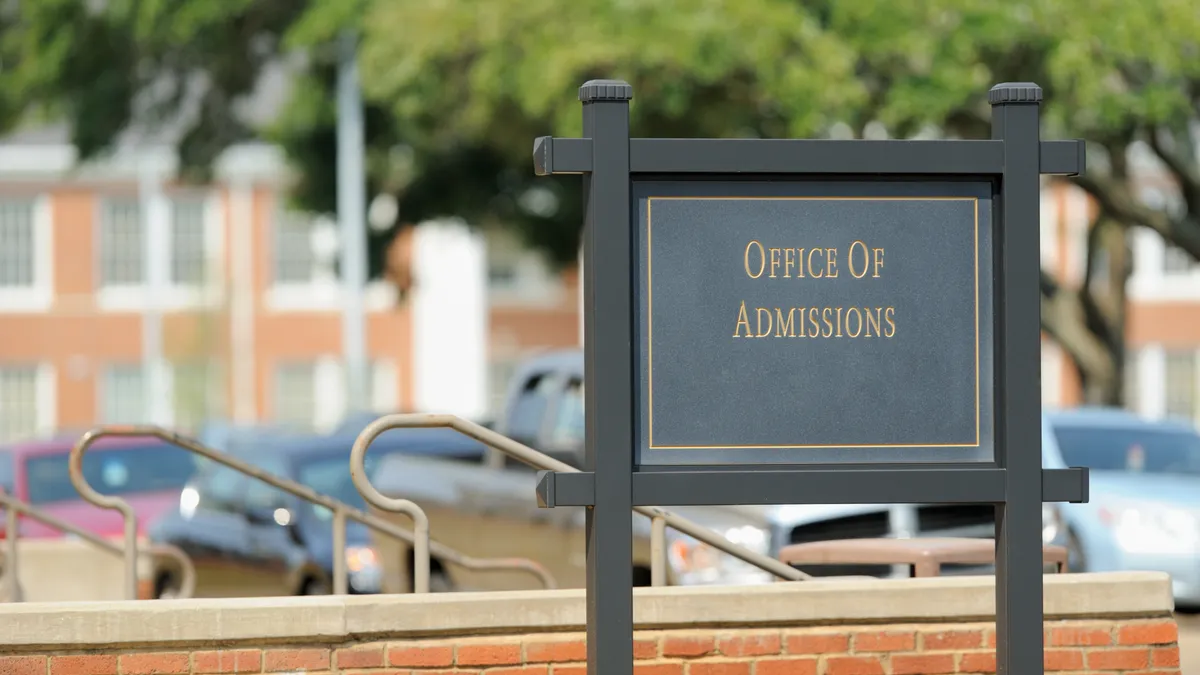The College Board announced changes to the SAT earlier this year. While the SAT was originally formulated — and named — as a measure of a student’s aptitude for college, now the test is marketed as a gauge of high school achievement, according to The Washington Post.
Additionally, the shift is probably driven by concerns over the rival ACT's rising popularity — it overtook the exam in 2012 in terms of the number of test-takers.
As new sample questions sprout up online ahead of the revamped test's 2016 debut, here are 10 things you should know about the redesigned test:
1. No more cramming?
One of the main ideas behind the redesign is to place more value on accumulated classroom study than last-minute cramming for the specific test. College Board President David Coleman says this is to emphasize "that the road to success is not last-minute tricks or cramming but the learning students do over years each day."
2. Take that, test preppers
With the redesign, the College Board is hoping to make things more difficult for the for-profit test-preparation industry. New test-prep tutorials will be offered online for free. The College Board seems to be sensitive to criticisms that it unfairly favors rich families that can pay for expensive test prep courses and materials. In announcing the SAT changes, College Board President David Coleman said that the organization “cannot stand by while some test-prep providers intimidate parents at all levels of income into the belief that the only way they can secure their child’s success is to pay for costly test preparation and coaching.”
3. Source material will be pertinent
Students will have to analyze and use evidence from reading passages and informational graphics, edit certain texts, and write their analysis of source texts. The current test, for example, didn't require students to cite evidence in the reading and writing sections. Source material will be pertinent to topics covered in history, social studies, and science classes.
4. Goodbye flash cards — eventually
The test will focus on relevant words — words that students use or will use in their everyday lives — instead of obscure words. The test will ask students to figure out the meaning of the words based on their context in reading passages.
In describing the change, the College Board references the ultimate pointlessness of studying for obscure-word vocabulary tests: “No longer will students use flashcards to memorize obscure words, only to forget them the minute they put their test pencils down.” But because the changes don’t go into effect for another two years, students will be using the flash card technique for another couple of years.
5. Math now focuses on "the heart of algebra"
For the new math section, more questions will be asked — 57, in 80 minutes — and calculators will be forbidden on one part of it. Also, more of the questions will be based on "the heart of algebra," with a focus on linear equations and functions.
6. The good old 1600
The SAT’s maximum score will return to 1600 from 2400, and multiple-choice questions will have four possible answers instead of five. An additional score will be given for the essay section, which will be optional.
7. Guessing is encouraged
The new test also drops penalties for incorrect answers. Instead, test scores will be based only on the number of correct answers, which means test takers should guess even when they have no clue about the correct answer. According to FiveThirtyEight.com, “guessing isn’t just advisable, it’s about to become strategically crucial for people seeking to maximize their performance.”
8. College application fee waivers for some
For each student who takes the SAT and meets certain income eligibility requirements, the College Board will provide four college application-fee waivers so students can apply to schools for free.
9. Critics aren’t satisfied
Even with the changes, critics say the SAT and other standardized tests are a poor predictor of college success. Colleges that require students to supply test scores to be considered for admission are needlessly eliminating qualified applicants, claim critics. Instead, according to a study released in February, high school GPA is a far more accurate predictor of success in college.
10. Is the SAT a dying breed anyway?
The so-called test-optional movement is gaining momentum. About 800 colleges and universities now admit a substantial number of students without SAT or ACT scores to undergrad programs, according to the National Center for Fair and Open Testing. The SAT launched in 1926, while its rival, the ACT, started in 1959. By 2012, the ACT had overtaken the SAT, as measured by the number of test takers.
Would you like to see more education news like this in your inbox on a daily basis? Subscribe to our Education Dive email newsletter! You may also want to read Education Dive's look at what price students begin to see return on their higher ed investment.







 Dive Awards
Dive Awards













